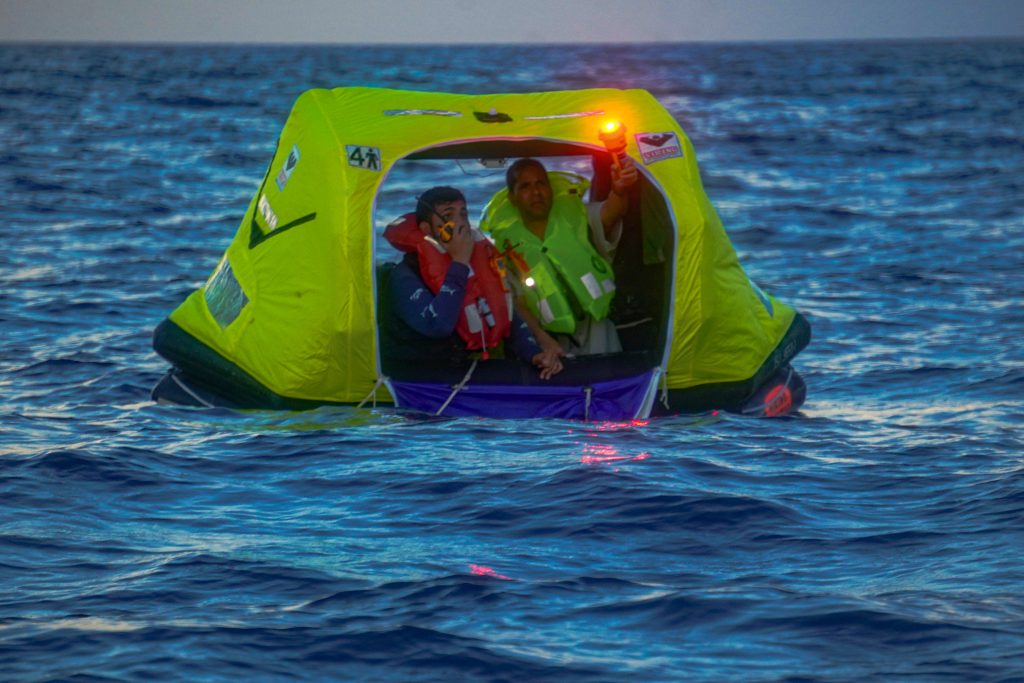
Pressemeldinger
Ocean Signal Launches rescueME PLB3 – COSPAS-SARSAT Approved Life-Saving Personal Locator Beacon with AIS and Mobile App in One Compact Beacon for Boaters

Se for deg dette: du er ute på det åpne vannet, omgitt av det store havet, og nyter naturens stillhet og skjønnhet. Plutselig trengs det et nødsignal, og tradisjonelt sett kan det bety avfyring av et bluss. Men i dagens verden, hvor miljøbevissthet er avgjørende, kan tradisjonelle fakler utgjøre betydelige økologiske risikoer. Men frykt ikke, miljøbevisste seilere, for det finnes et levedyktig alternativ til tradisjonelle fakler i form av elektroniske fakler (e-bluss). Fortsett å lese for å fordype deg i de miljøvennlige fordelene med e-bluss og hvordan de revolusjonerer båtlivet samtidig som de bevarer våre dyrebare marine økosystemer.

Men før vi utforsker fordelene med elektroniske fakler, er det viktig å forstå miljøkonsekvensene av deres tradisjonelle motparter. Tradisjonelle pyrotekniske fakler inneholder kjemikalier som perklorat og kaliumnitrat, som kan være skadelig for livet i havet og økosystemene. Når disse faklene slippes ut, frigjør de giftstoffer i vannet, noe som potensielt kan forårsake forurensning og skade på vannlevende organismer. Dessuten kan restene av brukte fakkel forsøple kystlinjer, noe som ytterligere forverrer miljøforringelsen.
På den annen side tilbyr e-bluss et bærekraftig alternativ til tradisjonelle pyrotekniske fakler, og reduserer mange av miljøproblemene knyttet til deres forgjengere. Ocean Signal tilbyr to e-flare-modeller, EDF1 og EDF2 . Disse moderne nødsignalene bruker LED-teknologi for å sende ut sterkt, synlig lys til fartøyer og redningstjenester. I tillegg bruker EDF2 infrarød teknologi for å øke synligheten ytterligere. I motsetning til tradisjonelle fakler produserer e-bluss ingen giftige rester og kan gjenbrukes, noe som reduserer deres miljøfotavtrykk betydelig. Følgende inkluderer en mer dyptgående titt på elektroniske fakler og deres primære fordeler.
Redusert avfall og forurensning: En av de viktigste fordelene med e-bluss er deres minimale innvirkning på marine økosystemer. I motsetning til tradisjonelle fakler, som etterlater rusk og kjemiske rester, produserer ikke e-bluss avfall eller forurensning ved aktivering. Dette betyr at seilere kan signalisere om hjelp uten å skade miljøet de verdsetter. I tillegg reduserer den gjenbrukbare naturen til e-bluss behovet for hyppig avhending, og minimerer ytterligere avfallsgenerering og miljøbelastning.
Lang levetid og pålitelighet: E-bluss har forlenget batterilevetid og holdbarhet, noe som sikrer at de forblir operative når det trengs mest. I motsetning til tradisjonelle fakler, som kan degraderes over tid og miste effektivitet, opprettholder ikke e-bluss funksjonaliteten over flere bruksområder, men har også en betydelig lengre driftsperiode (brenntid).
Forskriftsoverholdelse og sikkerhet: I tillegg til miljøfordelene, tilbyr e-flares praktiske fordeler når det gjelder overholdelse av forskrifter og sikkerhet. Varierte internasjonale myndigheter som United States Coast Guard og Transport Canada anerkjenner nå elektroniske fakler (kategorisert som Electronic Visual Distress Signals – EVDS) som passende alternativer til tradisjonelle pyrotekniske fakler, noe som gjør dem til et stadig mer populært valg blant båtfolk. Videre bidrar deres forbedrede sikt til å forbedre responstidene i nødstilfeller, og dermed øke den generelle sikkerheten på vannet.
Omfavnelse av bærekraftig båtlivspraksis: Bruken av e-flares representerer et bredere skifte mot bærekraftig båtlivspraksis og miljøforvaltning i det maritime samfunnet. Ved å velge miljøvennlige alternativer som e-bluss, demonstrerer seilere sin forpliktelse til å beskytte marine økosystemer og minimere deres karbonfotavtrykk. Videre baner innovasjonen og fremskrittet som driver elektronisk fakkelteknologi vei for fremtidige bærekraftige løsninger i båtindustrien.
Som forvaltere av havet er det vårt ansvar å navigere i farvannet med omsorg og respekt for de delikate økosystemene det opprettholder. Elektroniske fakler gir et fyrtårn av håp for miljøbevisste båtfolk, og gir et bærekraftig alternativ til tradisjonelle nødsignaler samtidig som sikkerheten ivaretas. Ved å omfavne disse innovative teknologiene kan seilere navigere på havet med selvtillit, vel vitende om at de minimerer miljøpåvirkningen og bevarer havets skjønnhet i generasjoner fremover.

Pressemeldinger
Ocean Signal Launches rescueME PLB3 – COSPAS-SARSAT Approved Life-Saving Personal Locator Beacon with AIS and Mobile App in One Compact Beacon for Boaters

Blogg
Forstå virkningen av AIS klasse M-forskriften på MOB-er

Uncategorized @sk
Ocean Signal named as finalist for maritime UK awards 2023